Real Mom Tip Series: 16 Best Pumping Tips
Breast pumping is a tricky endeavor for women whether you are pumping while you work or to create a supply when you leave the house. Some women struggle to get a few ounces at a time, so you want to make sure you use the best pumping tips.
I breastfed all of my babies, but pumping was something that I struggled to do well. I felt like I never produced enough milk while pumping, so I always looked for different breast pumping tips that could help with my supply and efficiency.
That’s where other moms helped me find tips that worked for me. Sometimes, it’s as simple as needing a different pump or needing to establish a good routine. I know how it feels to be in your shoes, so take a look at some of my favorite pumping tips.
Pin this blog for later! ↓
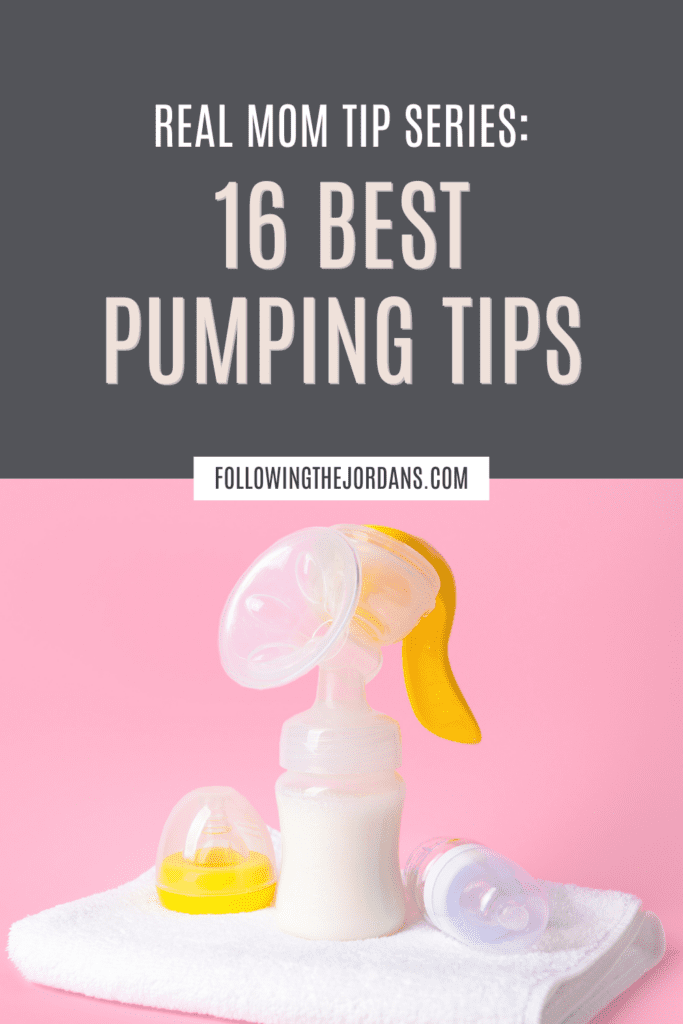
Related: Breastfeeding: What To Expect The First 2 Weeks
16 Best Pumping Tips
1. Make Sure You Have a Good Breast Pump
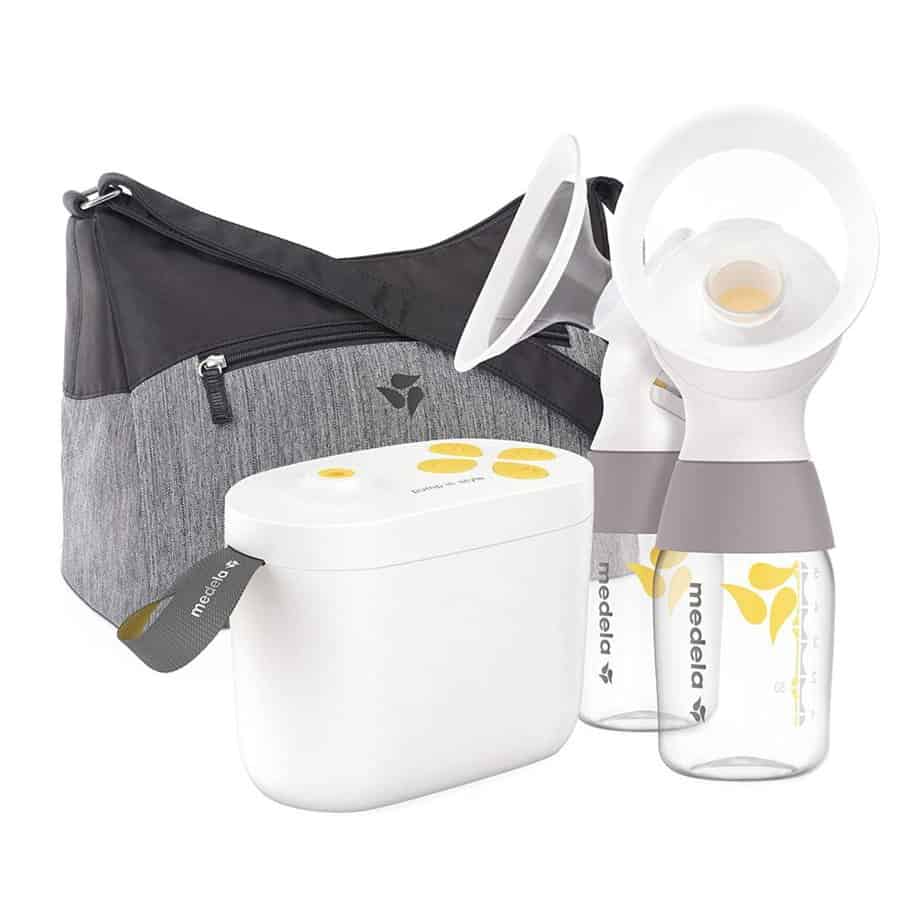
A good breast pump will cost more money, but the cheaper ones won’t perform as well. You don’t want your boobs in a torture device that doesn’t even work correctly.
It’s important to check with your health insurance to find out if the cost of a breast pump is covered. Many insurance providers give women a free electric breast pump, and some have several options to consider. If you have a few options, do your homework to figure out what model works the best for you.
I’ve tried several breast pumps, but my two favorites are the Spectra S2 and a Medela Pump in Style Double Electric Pump.
2. Have a Manual Pump as a Back Up
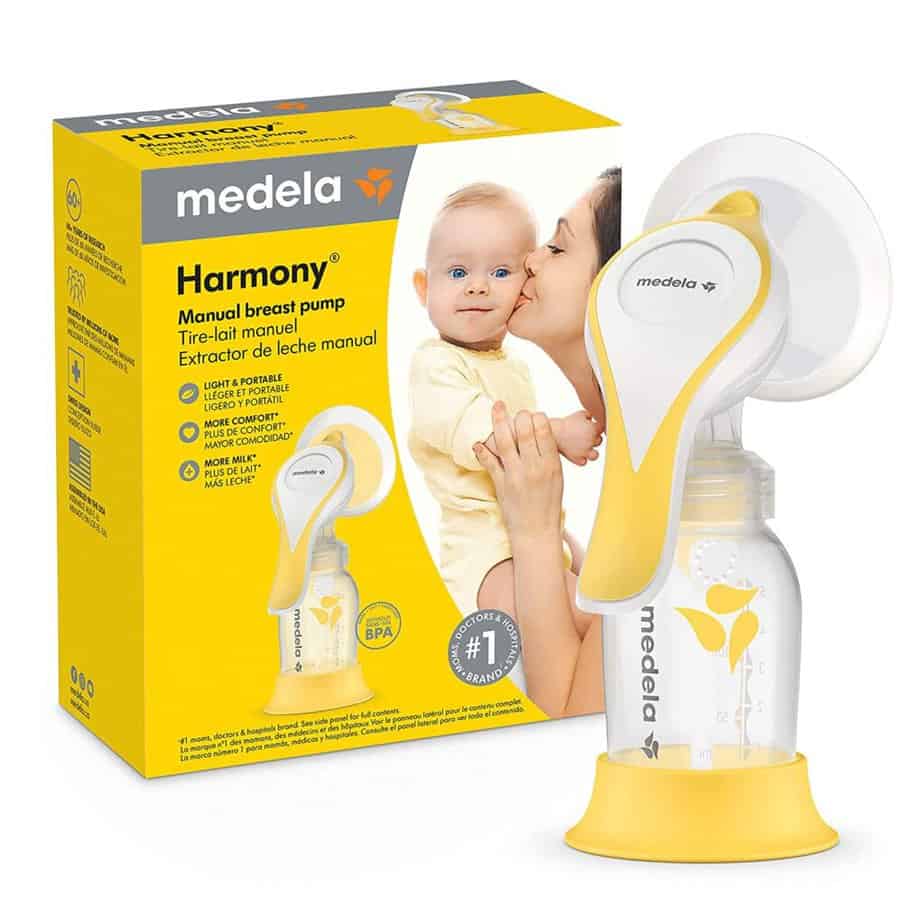
I always have a manual breast pump as a back up pump. If you only pump occasionally, a manual pump may be all you need. Despite not being electric, manual pumps are quite effective at removing milk from your breast.
The concern with these pumps isn’t that they can’t express milk – they do so well! – but they take more time and effort to do so. On the other hand, you can use these pumps wherever you want, and if the power goes out, you can still pump.
3. Get a Good Flange Fit
The breast shields, often called flanges, are an important part of your breast pump, and if the flanges don’t fit properly, your pump won’t function as properly. You are more likely to struggle to get out enough milk, and it could cause friction and pain.
It’s important to know that flanges sizes aren’t based on the size of your breasts – they have nothing to do with your bra size – but rather the size of your nipples. A flange should fit over your nipple, forming a seal around your areola.
4. Try Different Pump Brands
Sometimes, you spend all sorts of time researching a great pump, but it isn’t giving you the results you hoped. After you spent the time looking for the right pump, it stinks that it turned out to not be what you hoped.
Get a new breast pump!
All breast pumps are different, and the reality is, you can spend all sorts of time reading about them, but some work better for other people. It may feel hard to give up your current pump if you spent a lot of money on it, but by doing so, you’ll save yourself more frustration.
5. Pump While Breastfeeding
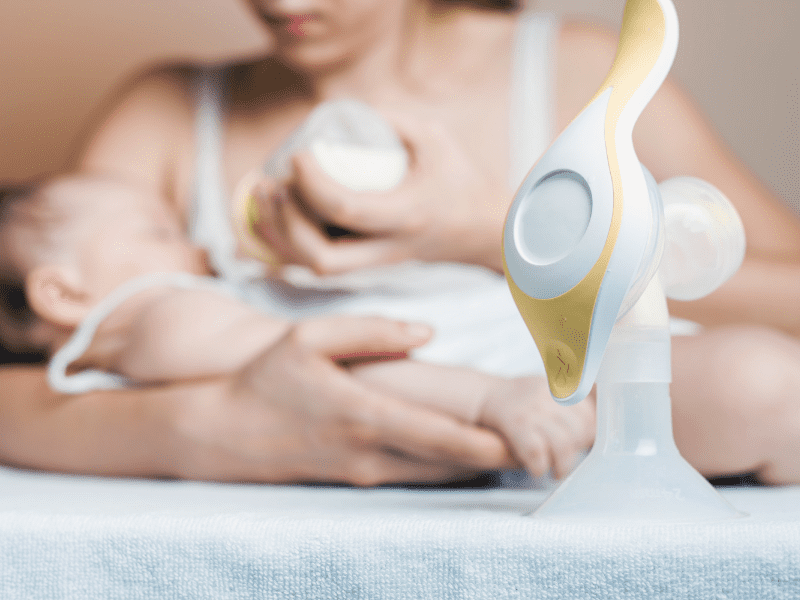
While it might be hard to multitask like this, pumping while nursing isn’t as hard as you think once you get the hang of it. Your body is already producing milk, and since breasts tend to let down more when you’re nursing than pumping, it’s one way to trick your body.
6. Make Sure You Have Extra Pumping Parts
If you’re pumping, especially at work, it’s best to have multiple pumping parts. I suggest having two or three sets of clean flanges, along with pumping membranes and tubing, depending on what your pump needs.
You should also have ample storage bottles or milk storage bags on hand so you don’t accidentally run out when you’re pumping at work.
7. Come Up With a Routine
Having a pumping schedule helps you ensure you can pump as much milk as possible. You don’t want to pump spontaneously; a regular pumping schedule will allow your body to produce the maximum amount of milk. Remember, breast milk is a supply and demand system. The more you demand, the more your body supplies.
Your schedule should depend on whether you are pumping for a stash when you go back to work, milk for times when you need to leave the house, or if you plan to exclusively pump.
8. Try to Relax
Relaxing helps your body release milk so it flows freely. It’s easy to be stressed while pumping, thinking about how much milk you need to provide while you are at work, but stress decreases milk production.
Here are some suggestions to use to relax while breast pumping.
- Listen to music or an audiobook.
- Make sure you have a comfortable place to sit and relax.
- Be sure you are seated in an ergonomic matter with the ability to lean forward if needed.
- Read a good book or watch a TV show you really enjoy.
9. Massage Your Breasts While Pumping
One of the best pumping tips I received was to massage my breasts while pumping. This helps your body stimulate a letdown, but I also found I simply created more milk while pumping if I regularly massaged my breasts.
10. Use a Warm Wash Cloth
Another simple pumping tip is to use a warm wash cloth or a warm compress on the top of your breast while pumping. For some women, this will either stimulate another let down or increase your output.
11. Always Pump Early in the Morning

One of my favorite breast pumping tips is to always pump as early in the morning as possible. You need plenty of sleep, but mothers tend to have more milk in the morning because their milk stored up as they slept.
Believe it or not, the best times to pump to get the most out is between 1 and 5 AM. It’s the peak prolactin timeframe for your body!
12. Breastfeed & Pump Often
Whether you’re exclusively pumping or pumping and nursing, the more often your baby (or your pump) is at your breast, the better your milk supply becomes. Your body makes milk in response to the demand.
13. Stay Hydrated
One of the most important things you can do is to stay hydrated. An average breastfeeding or pumping mom needs to consume around 13 cups of fluids each day. If you are dehydrated, it will decrease your milk supply.
14. Create a Pumping Area
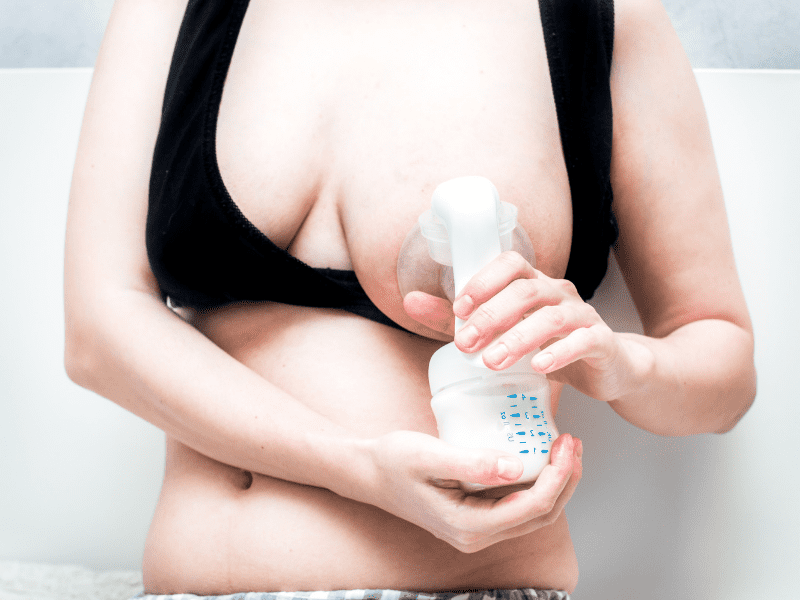
I typically pumped in the same area every day, so it made it easy to create a designated pumping area. This area was comfortable for me with a basket full of snacks, a large water bottle, a phone charger, and extra pumping supplies.
Create a space for yourself to be comfortable! The more comfortable you are, the better you’ll pump. I suggest keeping snacks because I know I always felt hungry while nursing or pumping.
You also should keep a picture of your baby if your pumping area is not at home. It’s often easier to have a letdown if you can look at your baby or listen to a video of your baby crying.
15. Consider Power Pumping
Power pumping is a trick you use to have your body produce more milk by draining your breasts fully and frequently. This stimulates your body to create more milk because your body believes your baby is hungry and needs to be fed more. You’re mimicking a baby’s behavior during a growth spurt she she suckles at the breast for longer and more often to fuel her growing body.
The goal is to pump for 20 minutes, rest for 10 to 15 minutes, pump for 10 minutes again. Then, take another short 10-15 minute break and pump another 10 minutes before finishing.
Try to do this three times per day for three days to see your body really go into overdrive.
16. Eat Foods that Boost Your Milk Supply
Some foods, when added to your diet, will help increase your breast milk supply. Try adding a few servings of these food into your meals throughout the week.
- Oatmeal
- Spinach
- Carrots
- Fennel
- Fenugreek Seeds
- Garlic
- Almonds
- Brewer’s Yeast
- Flax Seed
- Barley
- Sweet Potatoes
You can also try drinking some Mother’s Milk Tea to boost your supply. It’s an herbal blend, made with ingredients like fennel, fenugreek seeds, and coriander, all of which have lactogenic properties.
Use these pumping tips to increase your milk supply and efficiency. Remember to stay hydrated, get comfortable, and ensure you use a pump that works for your body!






